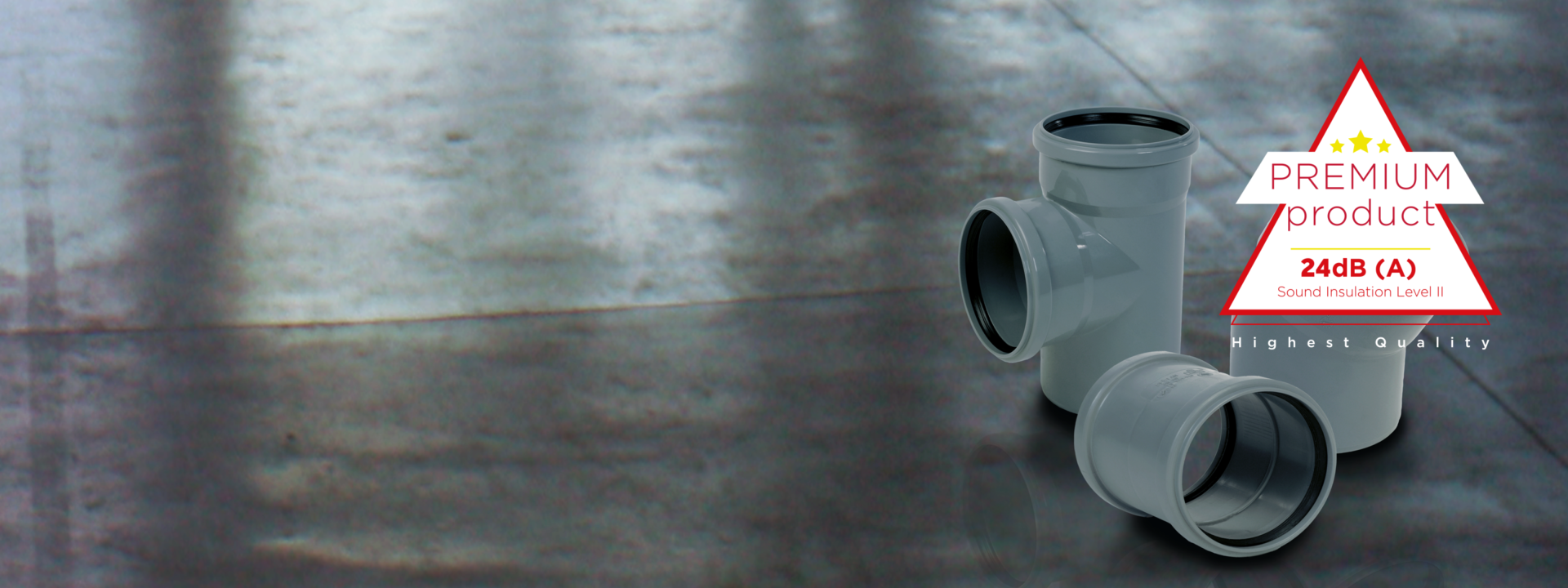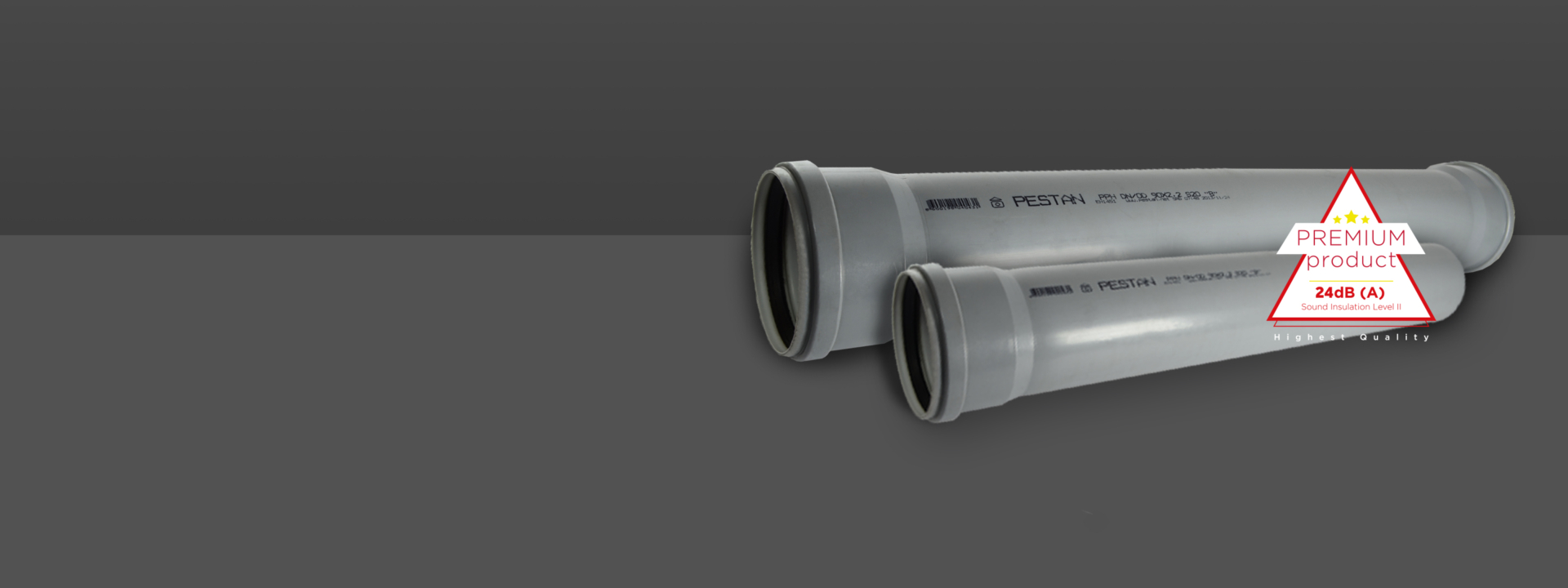Resistance to high temperatures:
Complete program Peštan HT (PP) pipes and fittings for wastewater within buildings is resistant to constant heat load of + 60 ° C, as well as the short-term thermal load of + 95 ° C.
Physical properties of materials
The density of 9 g / cm3, according to ISO 1183
Tensile strength of 28 MPa according to ISO 527
Modulus of stretching 1,300 MPa according to ISO 527
Impact strength according to Sharpy 70 kJ / m², according to ISO 179
Chemical resistance of materials
Peštan HT (PP) pipes and fittings are resistant to salt water, alcohol, acids, alkalis, sulphates, aggressive gas and all kinds of detergents. On the other hand, can not be used for the transport of water which contains high percentage of benzene, benzine (petrol) or acetone. Proof of PH2 to PH12
A complete table of chemical resistance can be downloaded in the section Download.
Connecting HT (PP) pipes
Peštan HT (PP) pipes and fittings are connected with sockets, and water resistance is achieved through sealing rings made of EPDM rubber (EN 681), which are inserted into the socket.
Installation and testing
Peštan HT (PP) pipes and fittings are installed in accordance with EN 12056 Gravity systems inside buildings.
Testing of internal sewage is mandatory in modern housing construction.
The pipeline should not overlap prior to the execution of the test, all joints are visible and clear. All openings must be temporarily closed during the test water resistance. The water with which the water resistance test should be dry. Overpressure testing the water resistance ranges from a minimum of 0.03 bar to a maximum of 0.5 bar. Tightness test takes an hour. Criteria for passing the test water resistance is to not lose more than 0.5 liters / hour for every 10 m2 of internal surface of the pipeline.
Sound insulation
There are two types of noise that vary widely in the medium through which is transmitted:
The noise of airborn (Airborn noise)
The noise that is transmitted through the walls of buildings (Structure-borne noise)
Both types of noise can be reduced to optimal levels in different ways.
The noise of airborn (Airborn noise) is reduced so that the pipes and fittings produced by special technology of special materials (materials reinforced-modified mineral additives) or by optimizing the use of fittings in places change of direction of the pipeline.
The noise that is transmitted through the walls of buildings (Structure-borne noise) is reduced so that the pipeline is installed properly with good quality clamps with molded rubber (fixed points) and the optimum tightening clamp (slip point).
To determine the effectiveness of the sound insulation, the system of pipes and fittings for house sewage installations, Peštan HTPP system was sent for testing at the renowned German Fraunhofer Institute for Building Physics (IBP) in Stuttgart.
The tests were carried out according to EN 14366 (Laboratory measurement of noise from waste water installations) and DIN 4109 (Sound insulation in buildings – Requirements and verifications) and Peštan HTPP system has shown excellent results with the measured noise level of just 24dB (A ). (Test report P-BA 95/2016e)





























